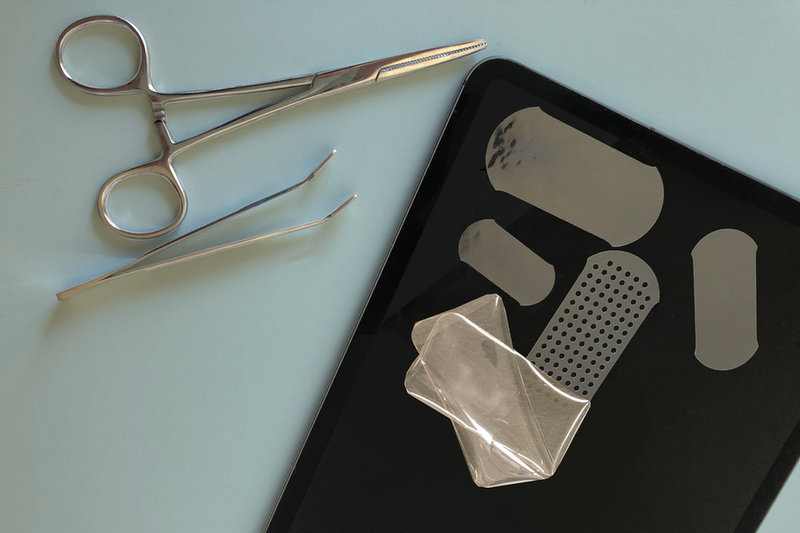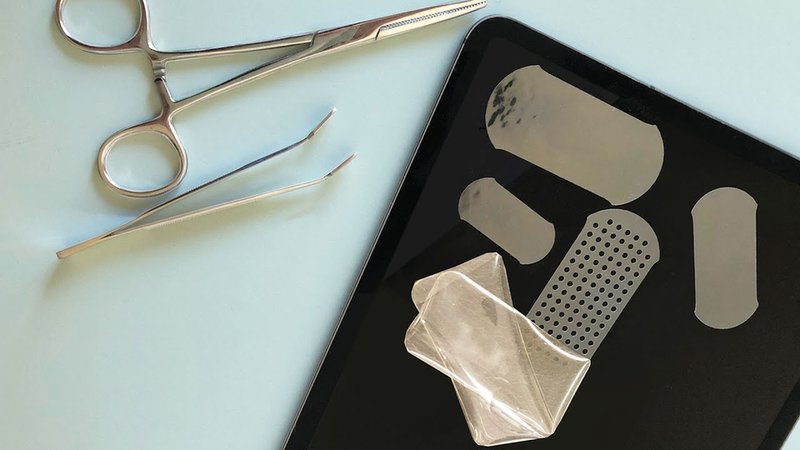Regulation
Spider silk: a sticky solution to traditional sutures
In a flash of arachnid inspiration, researchers have copied the structure of spider silk to develop a double-sided tape which can tightly bind flesh tissues in mere seconds. The tape could eventually be used in the place of surgical sutures or to implant medical devices – so what is it made from, and how does it work? Chloe Kent reports.
Image: Tony Pulsone
W
hen it comes to soft or fragile tissues like the lung or trachea, using surgical sutures to close up a wound can be pretty tricky. The risk and consequences of bleeding and infection are magnified, so the process requires a great deal of skill and finesse, but when a patient is under the knife it can often be the only option.
Now, engineers at the Massachusetts Institute of Technology (MIT) have developed a double-sided tape which can rapidly seal tissues together. It is hoped the tape can one day replace surgical sutures in contexts where they won’t work well or could cause complications.
Many surgeries will use tissue glue when sutures aren’t appropriate, but tissue glues also have their caveats. They can take several minutes to bind, and they’re known to drip onto other parts of the body from the site of the wound,
So, the research team looked to a sticky substance spiders use to catch their prey for inspiration.

MIT engineers have devised a double-sided adhesive that can be used to seal tissues together. Image courtesy of Felice Frankel, Christine Daniloff, MIT.
Polyacrylic acid and NHS esters
Forming a tight seal between tissues in the human body is incredibly difficult due to moisture on the tissue surfaces, which interferes with the adhesion process. Where tissue glue works by diffusing adhesive molecules through tissue moisture to bind two surfaces together, spider glue works by absorbing water from a surface instantaneously to allow the glue to adhere to a small dry patch.
MIT graduate research assistant in mechanical engineering Hyunwoo Yuk, one of the lead authors on the paper, says: “Spiders catch their prey based on sticky glue in their web and they are often required to do so in rainy days too. Their web glue contains not only adhesive polymers but also hydroscopic biopolymers that can absorb water from the prey’s surface instantly to dry it, enabling the rapid action of sticky glue for capture.
“Inspired by the mechanism of spider web glue, we invented a dry-crosslinking mechanism for our dry double-sided tape in which we designed material to quickly absorb the surface water and form crosslinks to achieve instant and robust adhesion of wet tissues, instead of relying on diffusion like existing tissue adhesives.”
“We wish to provide a better solution for wound closure.”
The material for the tape contains polyacrylic acid, a highly absorbent material which sucks up water on contact and quickly forms weak hydrogen bonds between the two tissue surfaces that need to connect. Embedded within the polyacyrlic acid is a group of chemicals called N-Hydroxysuccinimide (NHS) esters, which form much stronger covalent bonds with proteins in the tissue. The whole process takes about five seconds.
The ingredients within the tape can be varied depending on its purpose, meaning the researchers can control how fast it breaks down inside the body. Gelatin can be used for tape which needs to break down within days or weeks, while chitosan – a hard polysaccharide found inside insect shells – can be used in tapes which need to last up to a year.
Yuk says: “Surgical closure of wounds by conventional methods such as sutures and staples face numerous challenges and limitations such as tissue damages and leakages, often associated with serious clinical complications.
“We wish to provide a better solution for wound closure and healing to supplement or eventually replace sutures and staplers by brining convenience and effectiveness of duct tapes into the operating rooms.”
Further animal testing required
So far the tape has been tested in pig tissue, including the lungs, trachea, skin, small intestine, stomach and liver. The tape worked particularly well in sealing the gastrointestinal tract, which could have useful applications in preventing gut leakage that sometimes occurs following surgery and can lead to infections like sepsis.
As well as closing up wounds, the tape could be used to implant medical devices within the body.
The tape has been used to fix small polyurethane patches to the hearts of living rats. Such a procedure would typically take a highly experienced surgeon to perform, but the research team were able to stick the patches on with their tape by simply pressing down. The patches stayed in place for several days.
“We aim to further test our technology in more realistic pre-clinical and clinical settings.”
Yuk says: “Currently, most implantable devices either experience unstable integration to tissues or affix with sutures with unwanted tissue damage and non-conformal contact to target tissues. With our tape, various implantable devices may find a way to seamlessly integrate with different parts of our body.”
Looking forward, the research team aim to further test the technology before reaching any human subjects. They’re working with surgeons and clinical experts at Harvard Medical School and the Mayo Clinic to test the bio-adhesive tapes, identifying additional applications for the adhesives to test on animals.
Yuk says: “With our ongoing works, we aim to further test our technology in more realistic pre-clinical and clinical settings, to boost the translation and eventual commercialisation of our technology.”
